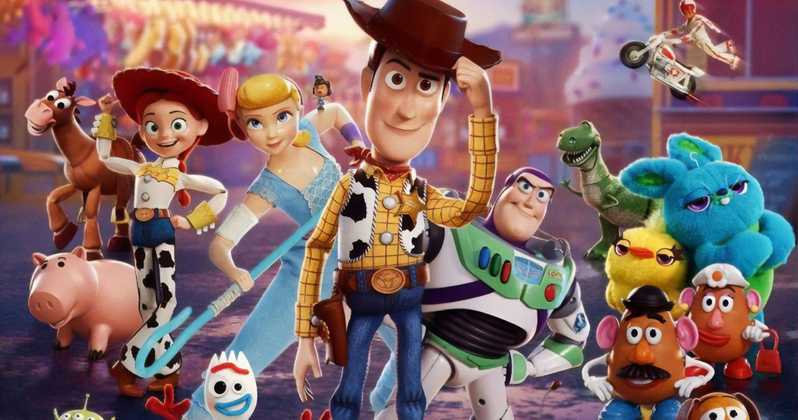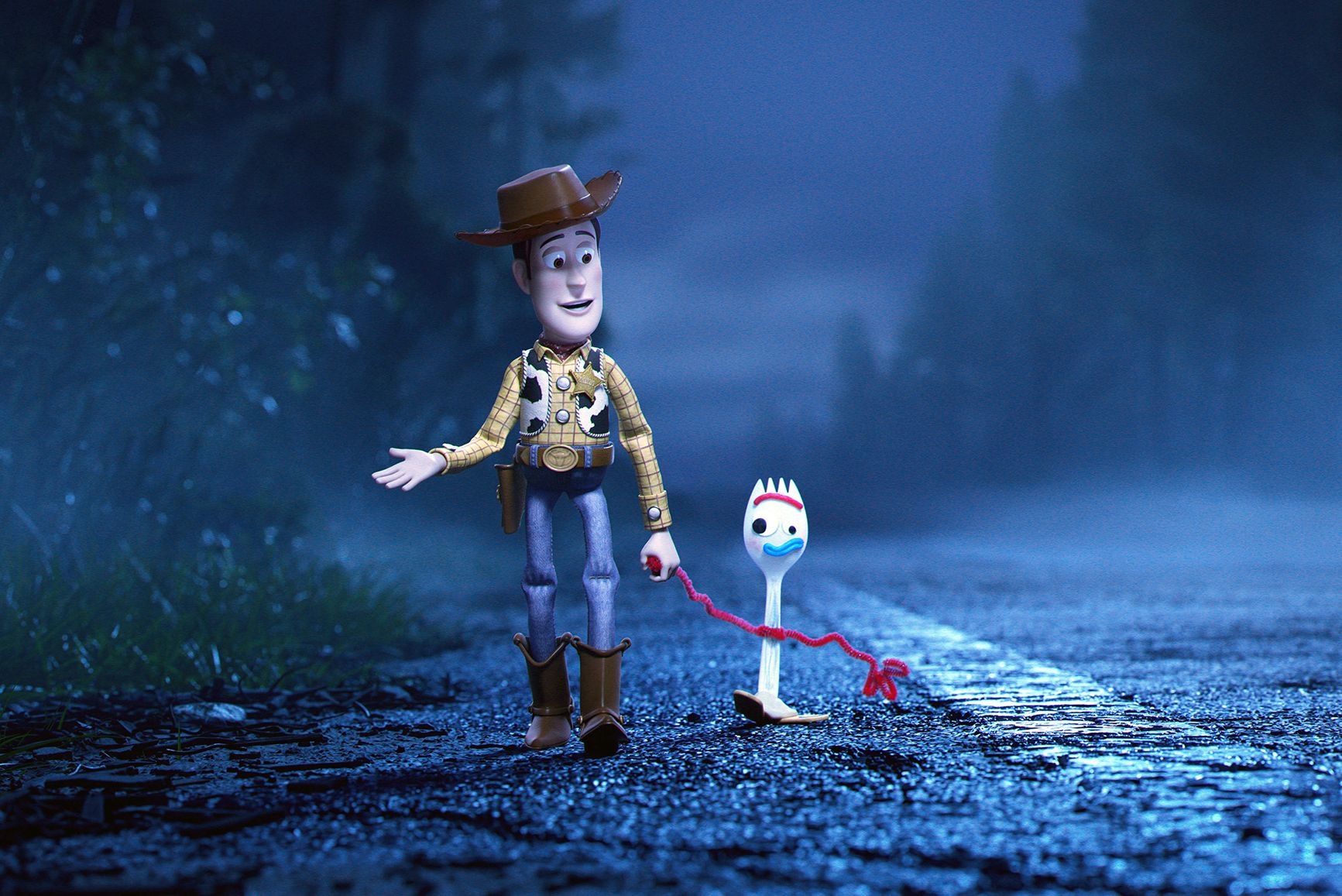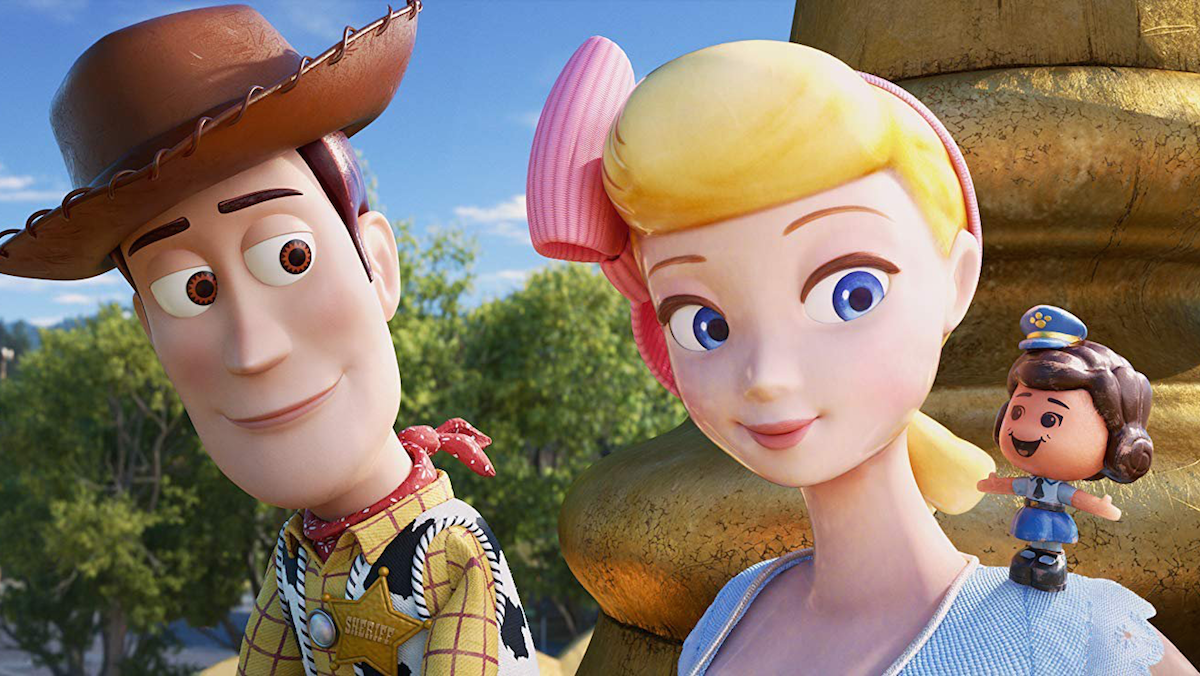1995’s Toy Story pushed the boundaries of technology and our imaginations by asking: ‘what if when we exited the room and closed the doors behind us, our toys came to life?’ As a kid, this idea felt more surreal than a fat man in a red suit coming down a chimney or a winged fairy sneaking into my room to trade my fallen tooth for a dollar. It was also the first ever 3D animated feature film. I was too young when it came out to experience the transition, but those of a generation before me will tell you that watching the way Buzz, Woody and friends move on the big screen was nothing short of revolutionary. The later films swam deeper and explored a toy’s profound connection to their kid owners before finally arriving at the bittersweet conclusion that eventually all kids grow up. The realisation that Andy wouldn’t be playing with his toys any longer was heartbreaking, but little Bonnie’s arrival meant that these toys can continue the cycle of bringing sheer joy to the lives of children… off-screen, for infinity and beyond. What else is there to say? I wondered. A lot, as it turns out. Toy Story 4 is incredibly fun, thrilling, hilarious and emotionally poignant. It is also perhaps the most philosophical and mature chapter in this franchise. Woody has fallen out of favour. While he’s still the chief of the crew when the toys come to life, he’s left in a dusty cupboard by Bonnie during her playtime. In Bonnie’s world, Jessie is the most badass cowboy in town! (It’s an interesting choice by writers Andrew Stanton and Stephany Folsom. It makes sense that a little girl would find Jesse cooler than Woody.) Woody faces an existential crisis. Imagine being so single-minded and singularly focused, knowing in your gut cotton and bones thread that you have one purpose in life, only for that purpose to be snatched away. Things get a lot more complicated when Bonnie goes to kindergarten (“no toys allowed,” her dad says) and makes a toy out of a disposable spork and other scraps from a wastepaper basket. She calls it Forky. Much to Woody and the rest of the toys’ shock, Forky comes to life. We have a lot of questions on our mind, just like they have. The writers add another layer of intrigue to the concept of sentient toys.
What is a toy? A short aside. The early parts of Toy Story 1 will make you wonder if you’re just witnessing the illustration of kids’ imaginations — think Barney & Friends. But then we see the toys work together to scare the neighbourhood bully. These toys are sentient. But what gives them life? What separates say a toaster from a remote control car? Is it a child’s love or touch? Maybe. But then again, the franchise has shown us that toys in unopened packages in toystores come to life too. Whatever the case, Toy Story 4 gives us a lot to ponder upon in this area. One of the narrative threads is about a toy’s consciousness — “the inner voice that tells you what’s right from wrong,” Woody tells Buzz.
Anyway, back to Forky. While other toys have an unbending desire to be played by kids and put smiles on their faces, Forky is ever so eager to be in a trashcan. Again, it circles back to one of the core themes of the film. Forky thinks it’s his destiny to be used to eat a cup of noodles and once that’s actualized, once there is nothing else left for him to accomplish, he feels he’s trash. The idea of being dumped in a dustbin and forgotten about feels “warm and cozy.” Here, ‘Dustbin’ as crazy as it sounds, becomes an embodiment of death. I wonder, is Forky trying to take his own life, because he feels death is serene next to a life lacking in meaning and purpose. (A hilarious gag sees Woody repeatedly try and stop Forky from plunging into the trash.) One of the best scenes in the film is a quiet one. Oh, how I love my quiet character moments. While Bonnie and family are on a road trip, Forky jumps out of the RV (because trash) and Woody jumps to try and save him, as the RV zooms away. We see Woody and Forky walking down a long empty street, lit only by street lamps. As they walk, Woody tries to enlighten Forky on the beauty of being a toy and the gratification one can get by making a kid happy. The brilliance of the writing and Josh Cooley’s direction is that throughout the walk we also almost see the inner workings of Woody’s brain and by the end of the 5-mile trudge, Woody has started to question the purpose of life too. After all, Woody is immortal (as long as he’s kept in fairly good condition) and immortality, as compelling as it sounds, can be cruel. What is an immortal toy who believes his sole purpose is to be played with, going to do when he’s no longer being launched around the room by a toddler? This is where Bo Peep comes into the picture. Bo Peep who was given away by Andy’s sister years and years ago is now living freely, leading a group of ‘lost toys’ and adventuring around the country. In a cool character reinvention, Bo Peep has transformed from a polite version of Sansa Stark in Season 1 to post-Faceless Men training Arya Stark. She believes that life in and of itself has no singular meaning. The purpose of life is living it to the fullest and the world is your oyster. You see, for the longest time, the franchise has looked at ‘lost toys’ as either bottom of the barrel stray dogs or beings deserving of pity, while the toys with owners are noble men and women. Nothing, apparently, is better than having a kid snuggle with you under his/her blanket during a stormy night. But Toy Story 4 looks inwards and examines what it truly means to be lost. After all, is it a stray dog or a domesticated one that’s kept on a leash?
But the genius of Pixar animated films is that it consistently manages to blend mature themes with just plain old fun. That’s what makes a lot of Pixar films great. That’s what makes Toy Story 4 simply stellar. Above its underlying ponderous themes and layered character writing that will give thoughtful audiences plenty to chew on, lies a goddammed fun picture filled with colourful personalities that everyone can have a blast at. It’s exciting right from the get-go. In a flashback sequence, we see Woody, Bo Peep, Slinky Dog and the gang we’re oh so familiar with, come up with a plan to save RC from floating away in the drain during a violently rainy night. (Note the gorgeous cinematography and the way the “camera moves.” Whether or not this is the best Toy Story movie we can argue about later, but this I think is the most gorgeous. The film is magnificently lit from start to finish — there are scenes, like the one underneath a car, where we see a glimmer of orange, light the blackness of night.) There’s also an exciting heist and rescue sequence that takes place in an antique store filled with shelves that form corridors and dark aisles for our small toys to manoeuvre around. A scene in the movie is pure horror and suspense. The tension intensifies and the noose tightens as we come to a realisation that a couple of the protagonists are getting kidnapped by a sort-of princess doll and her ventriloquist puppet henchmen. But just like in Toy Story 3, the villain is born out of tragedy.
Toy Story 4 brings back a lot of the old characters and introduces new ones, all of whom are voiced by charismatic and talented actors, both in the comedic and dramatic department. We have Tom Hanks, Tim Allen, Annie Potts and Joan Cusack reprising their roles as Woody, Buzzlightyear, Bo Peep and Jessie. And we also have Tony Hale who’s sweet and heartbreaking as Forky, Keegan Michael Key and Jordan Peele as the always bickering Ducky and Bunny, Christina Hendricks as Gabby Gabby and the greatest man on earth Keanu Reeves as Duke Caboom (who will leave you on the floor heaving in laughter). All the comedy and over-the-top adventuring, thrills and philosophy lead to an ending that is just as emotional and powerful as Toy Story 3’s. I was in tears and to some degree, was reminded of the closing moments of Avengers: Endgame. There may yet be more Toy Story movies to come, but nothing will ever be the same again.
Rating: 4.5/5



